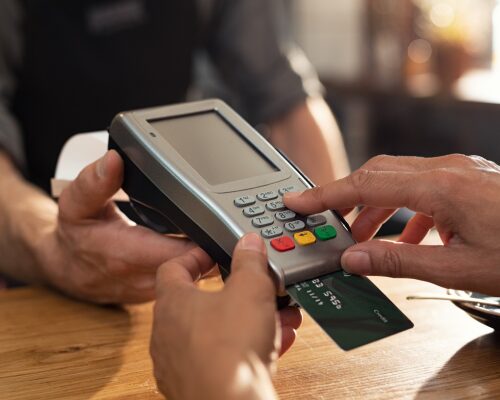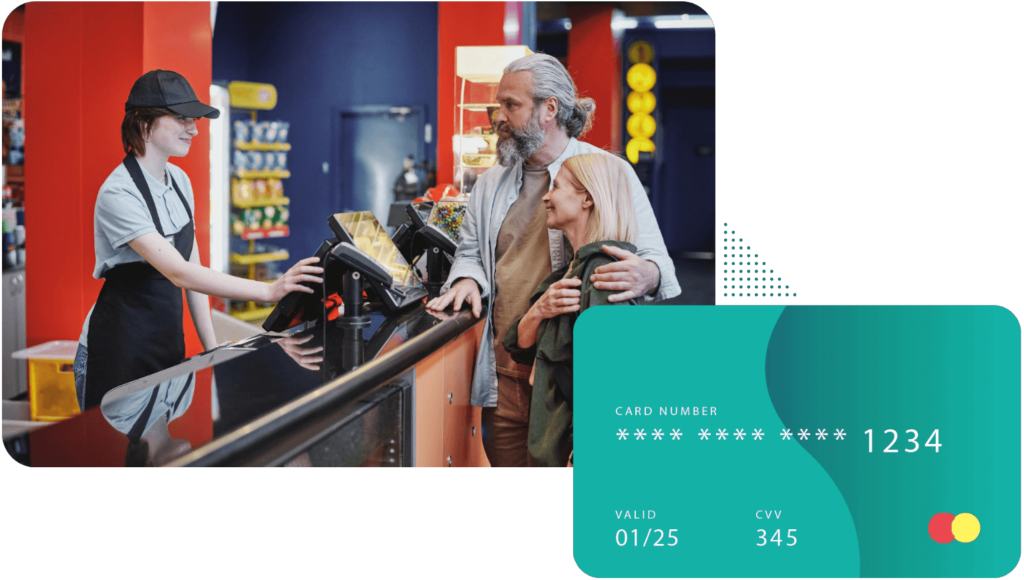Feast and Finances: Mastering the Art of Restaurant Payment Processing
Video marketing in the restaurant industry is the strategic creation and distribution of visual content designed to educate, engage, and entice potential customers.
In different places, where competition in the restaurant sector is significant, having a robust video strategy can differentiate a restaurant company from its rivals.
Expert restaurant video strategies involve showcasing the quality of work, customer testimonials, and the expertise of the service technicians.
This form of marketing is essential as it builds trust with potential clients, highlights the company’s professionalism, and significantly increases online visibility, thereby leading to more leads and conversions.
While not directly related to restaurants, understanding the evolution of restaurant credit card processing as well as similar merchant services can provide valuable insights into modernizing business operations.
Over time, restaurants have transitioned from cash-only establishments to adopting various sophisticated payment processing methods. The proliferation of credit and debit card use marked a significant shift that included the need for credit card processing services, followed by the advent of digital wallets and contactless payments.
This evolution reflects a broader societal shift towards convenience and security in transactions. Adapting to changing payment preferences is crucial for any business, including those in the restaurant industry, as it can improve customer satisfaction and streamline the sales process.
Traditional Payment Methods
In a restaurant business, especially one located in a dynamic market, understanding and accommodating clients’ varying preferences for payment is crucial for establishing strong customer relationships. Let’s explore the different payment methods available:
Cash Transactions
Despite being the oldest form of payment, cash transactions remain a reliable option for many customers.
It offers a straightforward and immediate exchange of funds, without any transaction fees for the business or the customer. The tangible nature of cash provides a sense of security that some customers still find reassuring.
Credit/Debit Card Payments
With the rise of digital transactions, credit and debit card payments have become increasingly popular. Customers appreciate the convenience and security offered by card payments.
It allows for quick and easy transactions, reducing the need for carrying large amounts of cash. Moreover, the capability to manage and track payments electronically is a significant advantage for both the business and the customer.
Checks and Vouchers
While less common in day-to-day transactions, checks and vouchers still have their place, particularly in larger restaurant projects where substantial amounts are involved. They offer a secured form of payment and can be useful for maintaining detailed financial records.
By providing a variety of payment options, a restaurant business can cater to the diverse needs and preferences of its clients, ensuring a seamless and satisfactory payment experience.
Modern Digital Payment Solutions
Modern digital payment solutions have completely revolutionized transactions within the restaurant industry, providing unparalleled convenience and safety for both businesses and customers.
These innovative payment methods have transformed the way transactions are conducted, offering a seamless and efficient experience.
Contactless Payments
They have emerged as a game-changer, enabling clients to pay for services effortlessly and without the need for physical contact.
This secure method utilizes NFC (Near Field Communication) technology, allowing a transaction to occur simply by waving a credit card or a payment-enabled mobile device over a payment terminal.
The ease and simplicity of this approach have greatly enhanced the overall payment experience for customers, eliminating the hassle of carrying cash or handling physical cards.
Mobile Wallets
On the other hand, mobile wallets have witnessed a significant rise in popularity, with applications like Apple Pay, Google Wallet, and Samsung Pay leading the charge.
These sophisticated tools store payment information on a mobile device, allowing users to make payments quickly and securely.
For restaurant contractors, embracing mobile wallet options means customers can effortlessly handle large transactions on the spot, without the need for cumbersome paperwork or delays.
This seamless integration of mobile wallets empowers businesses to provide a modern and efficient payment experience, while also ensuring the highest levels of security for both parties involved.
QR Code Payments
These have emerged as a versatile and convenient solution for the restaurant industry. By simply scanning a unique QR code using a smartphone camera, customers can easily process payments.
This method proves particularly useful when sending digital invoices, as customers can effortlessly scan the code and complete the payment without the need to manually enter any information.
This streamlined approach significantly reduces the payment process’s complexity, making it a win-win situation for both restaurant businesses and their valued customers.
By embracing these cutting-edge digital payment solutions, restaurant businesses can elevate their transaction processes, deliver exceptional customer experiences, and stay at the forefront of technological advancements within the industry.
Restaurant Point-of-Sale (POS) Systems
Overview and Integration of Restaurant Point-of-Sale (POS) Systems
Restaurant Point-of-Sale (POS) Systems are the cornerstone technological elements within the dining industry.
These systems streamline operations by integrating various functionalities into one cohesive platform. From processing transactions to managing inventory, and from labor scheduling to providing comprehensive sales reports, a POS system can handle it all.
The integration with other tools such as reservation and online ordering systems can optimize the customer experience and boost efficiency.
Benefits for Restaurant Owners
For restaurant owners, the adoption of a modern and advanced Point of Sale (POS) system brings numerous advantages.
By leveraging the power of technology, it enhances accuracy in order-taking and billing, significantly reducing instances of human error. This not only saves time but also ensures that customers’ orders are accurately recorded and billed.
In addition, a reliable POS system speeds up the checkout process, allowing for swift and seamless transactions. This improved efficiency contributes to enhanced customer satisfaction, as patrons no longer have to wait in long queues or endure delays in settling their bills.
The convenience and ease of use offered by a robust POS system undoubtedly make for a more enjoyable dining experience.
Moreover, a comprehensive POS system goes beyond transactional functions. It aids in detailed record-keeping and analytics, providing valuable insights to restaurant owners.
With access to data on sales performance, popular menu items, and customer preferences, owners can make informed and data-driven decisions about menu changes, pricing strategies, and targeted marketing campaigns. This level of business intelligence empowers owners to optimize their operations and maximize profitability.
Efficient inventory management is another significant benefit of a reliable POS system. By accurately tracking stock levels and automating reordering processes, it helps reduce waste and ensures the availability of popular items. This not only prevents out-of-stock situations but also minimizes excess inventory, thus reducing costs and improving overall inventory control.
In summary, the adoption of a robust payment processing system offers restaurant owners a wealth of advantages.
From enhanced accuracy and streamlined checkout processes to detailed analytics and efficient inventory management, it significantly contributes to operational efficiency and improved customer service. By leveraging technology and data, restaurant owners can achieve increased profitability and maintain a competitive edge in the dynamic and fast-paced hospitality industry.
Customer Experience Enhancement
Improving the customer experience is a vital aspect of staying competitive in the restaurant industry.
Whether customers want credit card payments, a better credit card processor, lower processing fees, or both debit and credit card options, handling payment processing fees is an essential part of making sure your business is thriving.
For some people, credit card processing is the most important part, whereas others prefer spending more time trying to pick the best restaurant payment processor. Overall, there are many payment processors as well as different factors to consider, such as credit card fees, credit card transaction alternatives, interchange fees, monthly fee options, and card-not-present transactions.
By implementing two key strategies, restaurants can achieve significant improvements in customer satisfaction.
Streamlining Payment Processes
One effective strategy that businesses can employ to enhance customer satisfaction is streamlining payment processes. This can be achieved by simplifying the payment experience and reducing friction during transactions, allowing customers to enjoy a seamless and hassle-free payment journey.
For instance, restaurant companies can leverage secure and user-friendly online payment systems that accept a wide range of payment methods. By implementing such systems, customers can conveniently make payments using their preferred method, whether it’s credit cards, digital wallets, or other forms of payment.
The adoption of these streamlined payment processes not only saves time for both customers and companies but also enables them to allocate more focus and resources to the actual service being provided. By providing a smooth and convenient payment experience, businesses can enhance customer satisfaction and build long-term loyalty.
Loyalty Programs Integration
Another impactful strategy that restaurant companies can consider is the integration of loyalty programs. By implementing a well-designed loyalty program specifically tailored toward the restaurant industry, companies have the opportunity to foster long-term relationships with their customers.
These loyalty programs can offer a range of enticing perks, discounts, and benefits to incentivize repeat business. For instance, customers could earn valuable rewards for successful referrals, enjoy exclusive discounted rates for regular maintenance services, or even receive priority scheduling as a gesture of appreciation for their ongoing loyalty.
Not only do these loyalty programs encourage customers to return for future services, but they also create a sense of exclusivity and value. Customers who feel appreciated and rewarded are more likely to spread the word about the exceptional service they have received, acting as brand ambassadors for the restaurant company.
By implementing these innovative strategies, restaurant companies can not only enhance customer satisfaction but also establish a strong and sustainable competitive advantage in the industry. Building lasting relationships and providing unique value propositions through loyalty programs can set restaurant companies apart from their competitors and contribute to long-term business success.
Compliance and Regulation
In many places, restaurant contractors have to be diligent in ensuring compliance and following regulations when creating video content, especially when it involves financial aspects. One important consideration is PCI DSS Compliance.
This means that if a restaurant company is creating videos that involve customer transactions, such as online payments for restaurant services, they must adhere to the Payment Card Industry Data Security Standard (PCI DSS).
This set of requirements is specifically designed to protect credit and debit card transactions against data theft and fraud.
When creating videos, it is crucial to effectively communicate the security measures taken to protect these transactions and maintain consumer trust, all while ensuring that sensitive information is not compromised.
Another aspect to consider is the legal considerations for restaurant payments. Although restaurant companies may differ from restaurants, there are valuable lessons to be learned from restaurant payment regulations when it comes to creating video content about business transactions.
It is essential to understand that videos discussing payment processing should never mislead customers and must clearly outline the terms of service, privacy policies, and any applicable fees or charges.
By being transparent in these videos, companies not only comply with the law but also establish a solid reputation for integrity and reliability.
Taking these factors into account and implementing them into video content can help restaurant contractors, navigate compliance and regulations effectively, ensuring that their videos are both informative and trustworthy for their audience.
Summary
The restaurant industry has seen a surge in demand for high-quality video content as a way to engage customers and showcase expertise.
Professionals within this space have found that demonstrating restaurant techniques, offering maintenance tips, and showing before-and-after project videos significantly enhance their credibility and attract a wider audience.
These multimedia strategies not only boost online presence but also educate homeowners, helping them make informed decisions regarding their restaurant needs.
The restaurant industry continues to evolve with advancements in payment processing technology. As we look to the future, the integration of mobile payments, contactless transactions, and even cryptocurrency options may become the norm.
These cutting-edge solutions are expected to offer greater convenience and security, making the dining experience smoother and more enjoyable for customers.
Furthermore, insights from data analytics garnered from payment systems will empower restaurateurs to optimize their operations and tailor their services to meet the ever-changing consumer preferences.









